
Home » The Type of Exercise Your Dog Desperately Needs—But You Might Not Know About
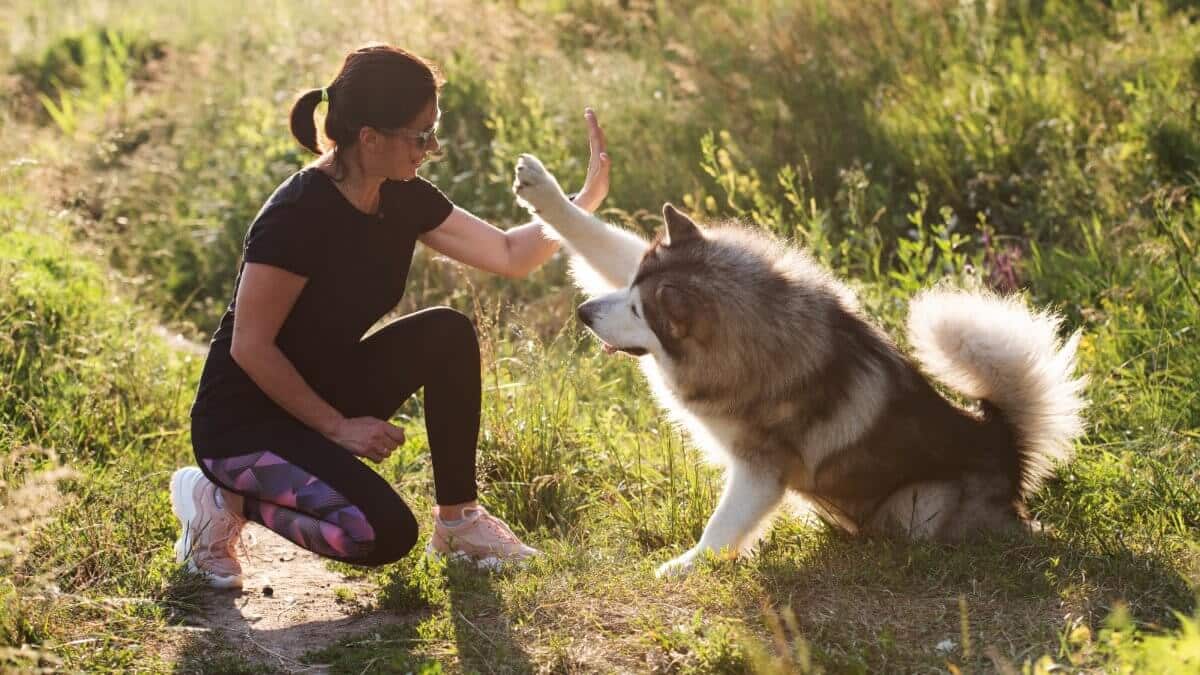
Hint: It’s not a walk or a game of fetch.
We all know dogs need physical exercise to stay healthy. You wouldn’t dream of skipping your dog’s daily walk, right? But there’s another kind of exercise your dog needs just as much, if not more, and it might not even be on your radar. We’re talking about mental exercise.
Just like humans, dogs get bored. And boredom in dogs doesn’t look like sitting around staring at the wall. It often shows up as destructive behavior, barking, anxiety, or even depression. If your dog chews up your couch cushions the minute you leave the house, or seems to have endless energy no matter how far you walk, he may be starved for mental stimulation, not physical movement.
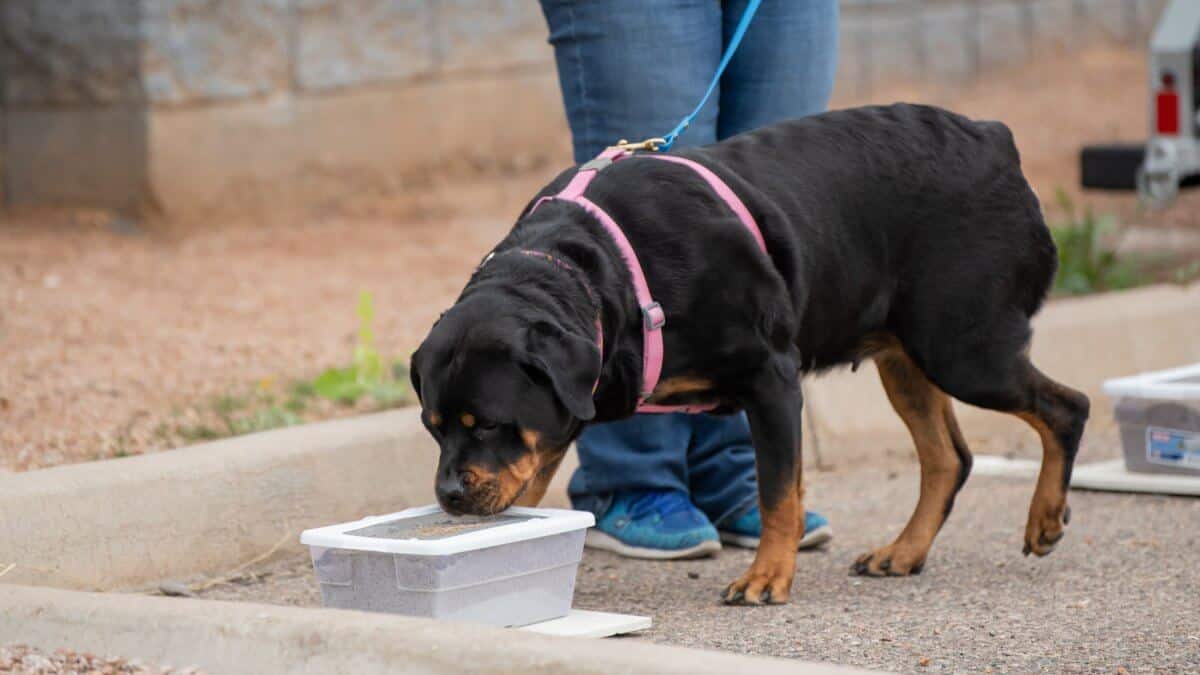
Mental exercise is any activity that engages your dog’s brain. It challenges their problem-solving skills, taps into their instincts, or simply forces them to think in a way they wouldn’t during an ordinary walk. And it’s vital for their overall well-being.
Mental stimulation can come in many forms: food puzzles, training sessions, scent games, or even just letting your dog sniff more on a walk. And here’s the kicker: ten minutes of solid mental work can tire a dog out more effectively than a 30-minute jog.
That’s not a typo. Cognitive fatigue is real, and it’s powerful.
If you’ve got a high-energy dog, you’ve probably already experienced the paradox: the more you exercise them physically, the more stamina they seem to build. You throw the ball until your arm is sore, and they’re still bouncing off the walls. That’s because dogs, especially working breeds, herding dogs, and terriers, were bred not just for endurance but for focus, decision-making, and problem-solving.
Your Border Collie wants to herd. Your Beagle wants to follow a scent. Your Scottie wants to dig or search. Physical movement is just one part of the equation. Without the why behind the action, it’s just burning energy without satisfying the dog’s deeper drives.
Mental enrichment allows dogs to do what they were born to do in a safe, structured way, and helps to avoid burnout, reactivity, and stress behaviors that often come from unmet needs.
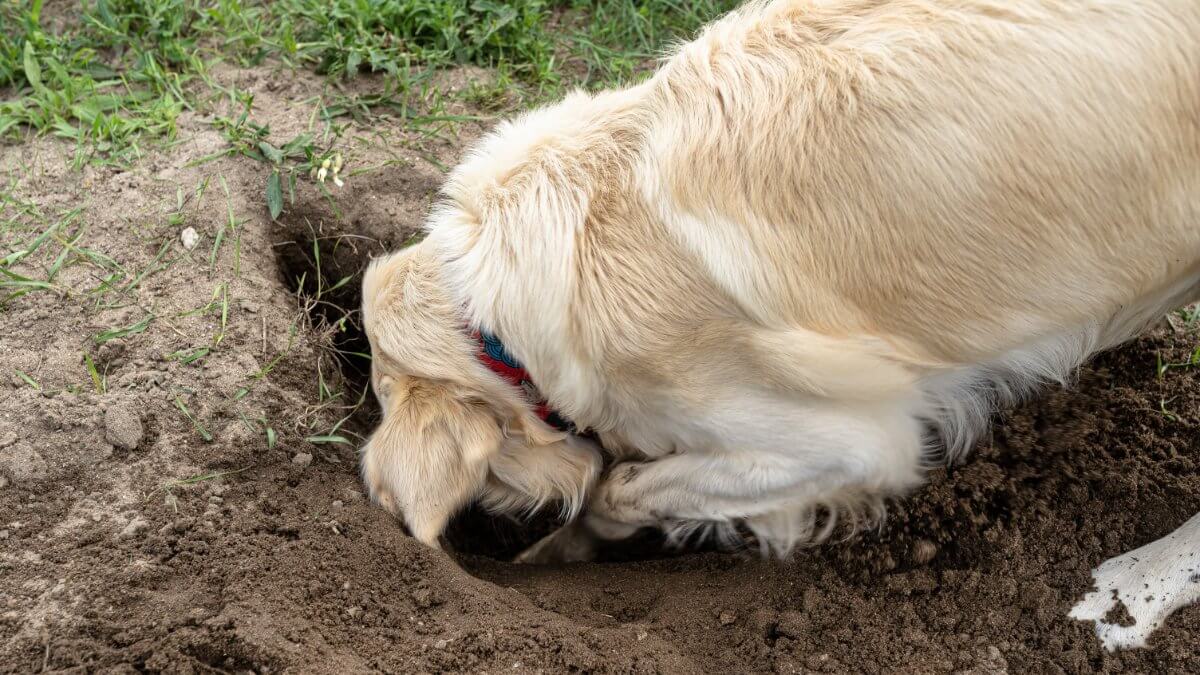
Sound familiar? If you’re seeing one or more of these, your dog may not be “bad,” just bored.
Dogs have up to 300 million scent receptors in their noses. Humans have five million. Giving a dog a chance to use its nose is like handing a child a video game console; it’s instantly engaging.
Snuffle mats (rugs made of fleece strips where you hide kibble or treats) are an easy place to start. For more advanced fun, try hiding treats around your house or yard and teaching your dog to “find it.”
You can even try AKC (American Kennel Club) or NACSW (National Association of Canine Scent Work) nose work, if you want to take it to the next level. Many local training centers offer classes, and your dog will absolutely love it.
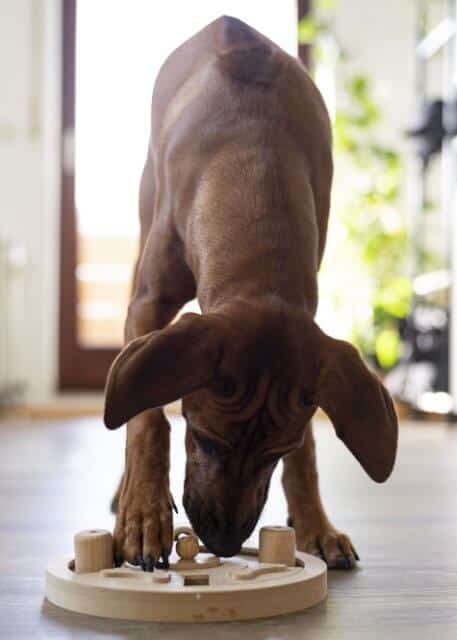
Don’t just toss food in a bowl. Make your dog earn it; this is not a bad thing. Dogs think it’s fun!
Interactive feeders like the Kong Wobbler, Nina Ottosson puzzle boards, or frozen stuffed Kongs can turn mealtime into a brain workout. Dogs love the challenge, and they eat more slowly, which is better for digestion.
Training is mental gold. Even basic obedience commands like sit, down, stay, and recall engage your dog’s brain and strengthens your bond.
Work on fun tricks like “spin,” “high five,” or “go to your place.” Even 5–10 minutes a day of focused training can be incredibly satisfying for your dog, and can make your life easier too.
Instead of power-walking your dog through the neighborhood, try a “sniffari,” a walk where the dog sets the pace and follows its nose. Yes, you’ll go slower. No, it won’t look impressive on your fitness tracker. But your dog’s brain will light up in ways that a jog around the block can’t replicate.
A decompression walk in a quiet area on a long leash (15–30 feet) is one of the most effective and calming forms of enrichment.
Dogs love having purpose. Give them tasks like carrying a backpack on a hike, helping you pick up toys, or learning to retrieve the remote. For working breeds especially, “jobs” help to channel energy into useful behavior.
If your dog enjoys Agility, Rally, Flyball, or even Barn Hunt, explore local dog sport clubs and see what ignites excitement.
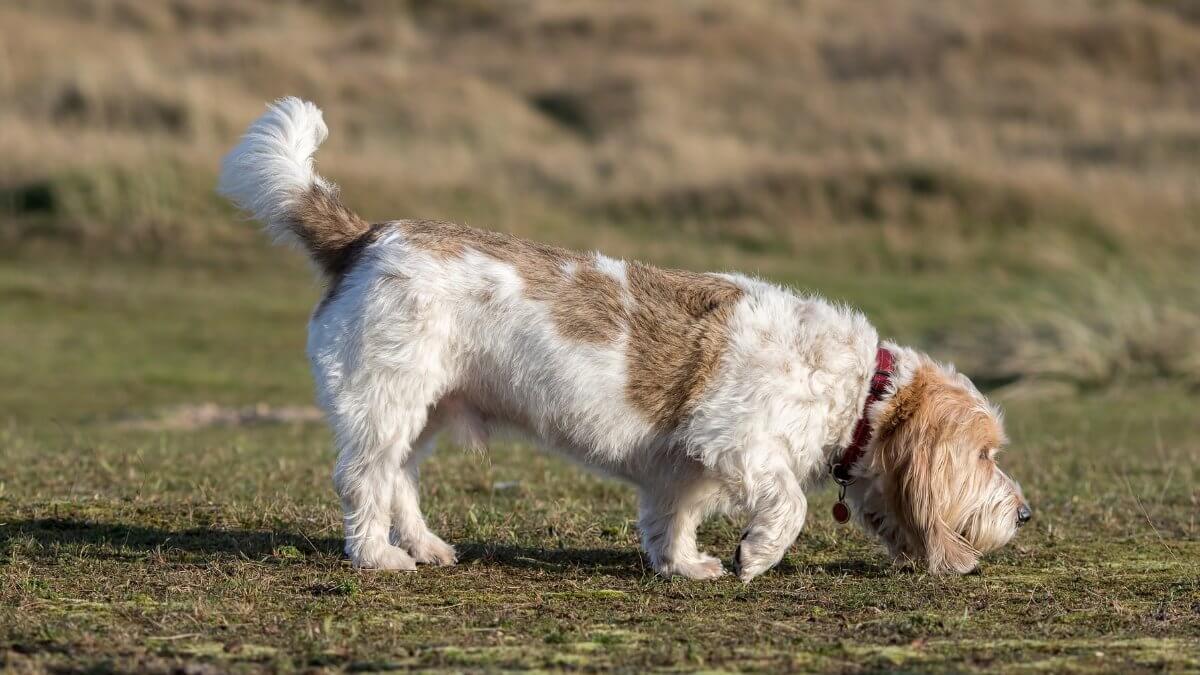
This isn’t just for Border Collies and Poodles. Every dog, from the most low-key Basset Hound to the scrappiest rescue mutt, benefits from mental engagement.
And no, they don’t have to be perfect at it. Dogs enjoy the process, not just the end goal. Let them try, let them fail, let them sniff and explore and learn. You’ll be amazed at how much calmer and more balanced they become.
When dogs have unmet mental needs, it often shows up in ways owners don’t understand: jumping, pulling, whining, anxiety, destruction, barking. These are communication signals, not misbehavior.
You don’t need to spend hours a day creating elaborate games. Just a few small changes to your routine, such as feeding from puzzle toys, doing a sniff walk once or twice a week, and/or running through some tricks before dinner, can make a massive difference.
If your dog is driving you nuts, try these mental workouts. You might just unlock a calmer, more content companion.

The best-kept secret in dog behavior is this: a tired brain is a good brain.
So, the next time your dog is bouncing off the walls or seems endlessly needy, ask yourself—not how far did we walk today, but how much mental exercise did we do?
Mental exercise is the game-changing ingredient that every dog needs. And once you start incorporating it, you’ll wonder how you ever got by without it.
